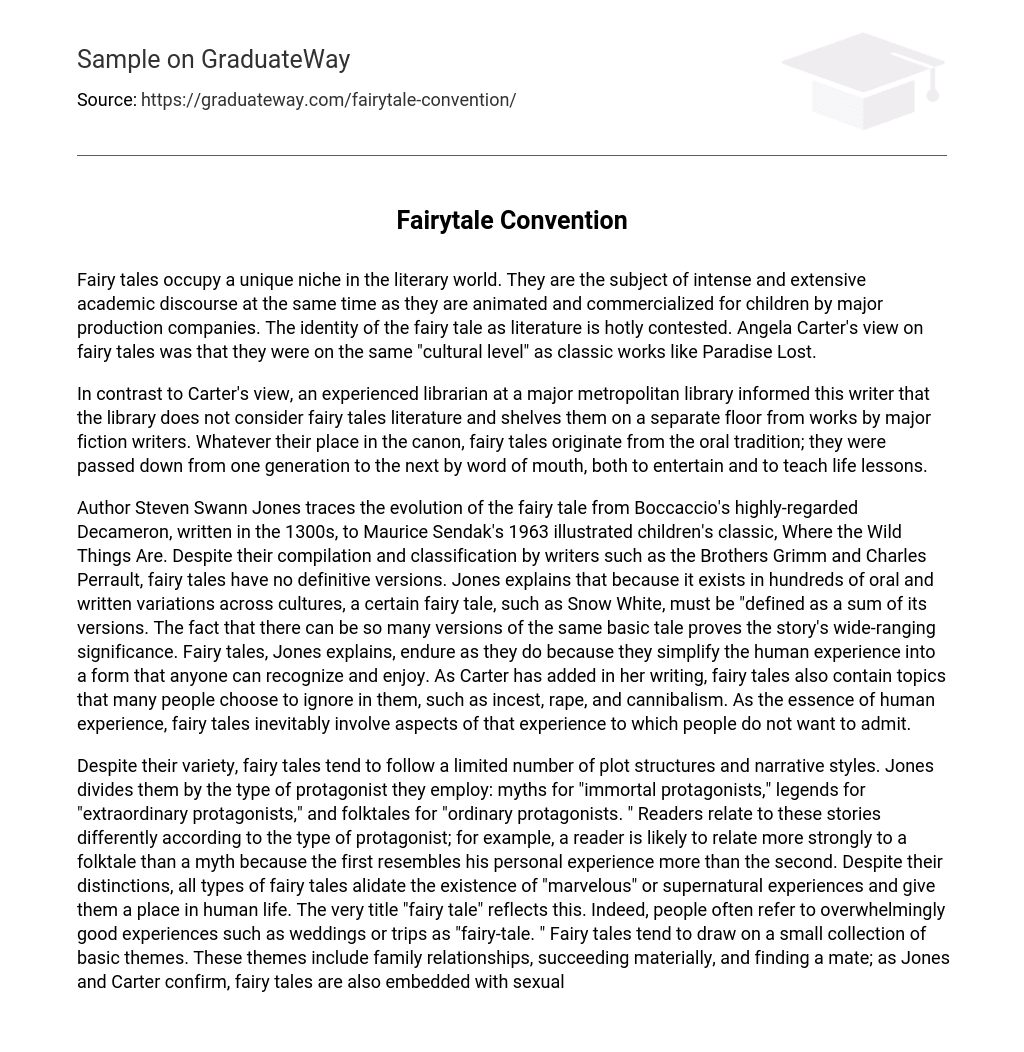Fairy tales have a unique place in literature. They are the subject of academic debates and also widely enjoyed by children through major company adaptations. The literary status of fairy tales is a contentious issue, with Angela Carter comparing them to esteemed works like Paradise Lost.
Despite Carter’s belief that fairy tales should be considered literature, a librarian at a major metropolitan library holds a different opinion. The librarian states that the library categorizes fairy tales separately from works by famous fiction writers and locates them on a separate floor. Nevertheless, regardless of their position in the literary canon, fairy tales originate from oral tradition. They were traditionally transmitted through generations verbally, serving as both entertainment and a means to convey life lessons.
Author Steven Swann Jones examines the evolution of fairy tales, from Boccaccio’s Decameron in the 1300s to Maurice Sendak’s Where the Wild Things Are in 1963. Fairy tales, despite being compiled by authors like the Brothers Grimm and Charles Perrault, lack definitive versions. Jones argues that due to their numerous variations across cultures, specific fairy tales like Snow White should be seen as a collective sum of different versions. This multitude of versions emphasizes the story’s broad-reaching significance. Jones asserts that fairy tales endure because they simplify the human experience into a universally recognizable and enjoyable form. Additionally, writer Carter suggests that fairy tales address taboo subjects such as incest, rape, and cannibalism which many individuals choose to ignore. As reflections of human existence, fairy tales inevitably encompass aspects that people may prefer not to acknowledge.
Despite their various forms, fairy tales generally adhere to a limited number of plot structures and narrative styles. According to Jones, they can be categorized based on the type of protagonist featured: myths have “immortal protagonists,” legends have “extraordinary protagonists,” and folktales have “ordinary protagonists.” The reader’s connection to these stories varies depending on the type of protagonist involved—someone may relate more strongly to a folktale because it resembles their personal experiences. Despite their differences, all types of fairy tales validate the existence of supernatural or extraordinary experiences, giving them a place in human life. The term “fairy tale” itself emphasizes this notion, as people often use it to describe remarkably positive experiences like weddings or trips. Moreover, fairy tales commonly incorporate a set of fundamental themes such as family relationships, material achievement, finding a partner, and the inclusion of sexual anxieties as confirmed by Jones and Carter. Ultimately, fairy tales center around the protagonist’s adventure, quest, or domestic issue.
The protagonist in a fairy tale must overcome or evade evil, often with the aid of magic, to achieve a state of lasting happiness. Fairy tales follow a fundamental pattern that reflects humanity’s desire for fulfillment, adventure, and eventual satisfaction. They also empathize with individuals’ encounters with malevolence or pessimism and their longing to rid these experiences through supernatural means. Overall, fairy tales validate righteousness and condemn injustice, providing readers with assurance that the world operates according to a system of fairness.
The transformation and modernization of fairy tales has led to various genres, which either expose the hidden meaning in a way that appeals to adults or eliminate it to cater to children. For instance, in his highly praised 1986 musical Into the Woods, Stephen Sondheim explored the “latent” themes of adultery, dishonesty, and death. In contrast, Disney’s animated adaptations of fairy tales primarily emphasize the magical and comforting elements as they are targeted at children. A notable example of Disney’s reversal of a fairy tale is its rendition of The Little Mermaid.
While Hans Christian Andersen’s 1836 version ends with the protagonist transforming into a spirit in limbo, which could be potentially terrifying for children, Disney’s 1989 version concludes with the protagonist becoming human and marrying her dream man. Fairy tales have been credited with giving rise to the fantasy genre, which incorporates numerous motifs from these tales. The enduring popularity of fairy tales across centuries and cultures affirms their significance in human development and entertainment. Even in the age of digital advancements where technology continually outstrips itself, it is difficult to envision a future where fairy tales lose their relevance.





